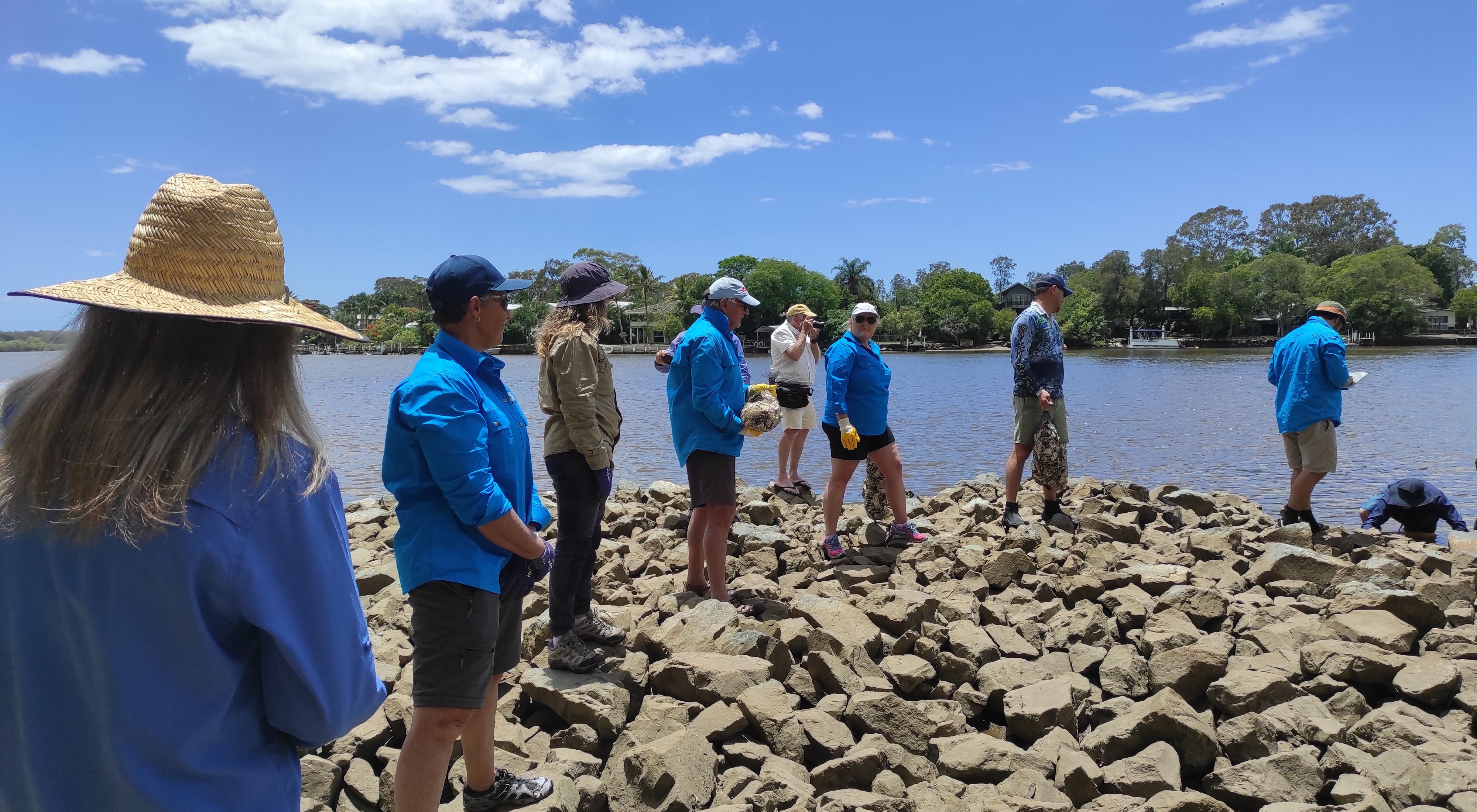TNC’s shellfish reef in Noosa becomes home to 140,000 baby oysters to kick-start reef restoration process
Media Contacts
-
Vanessa Billy
Communications Manager
The Nature Conservancy Australia
Phone: 0478 638 180
Email: vanessa.billy@tnc.org
Noosa’s new Huon Mundy (oyster) reefs have welcomed the first batch of baby oysters, which are being added to the rocky reef patches at the Tewantin restoration site, to help kick start the reef restoration process in the Noosa River.
On Friday 18th November, a team of approximately twenty volunteers, coordinated by The Nature Conservancy, 'seeded’ the rocky reef patches at Tewantin with hatchery-reared Sydney rock oysters.
The baby oysters, also known as’ spat’, were grown at the Bribie Island Research Centre, one of the partners in the Noosa oyster ecosystem restoration project. The baby oysters were settled on oyster shells, recycled as part of TNC’s local Shuck Don’t Chuck initiative, with each shell carrying about 10 baby oysters. Volunteers then hand placed the seeded shells on the reef patches, which raise the oysters above the river’s thick sediments.
These seeded oysters will be joined by wild oysters which will recruit naturally in the Noosa River and provide habitat for marine plants, invertebrates and a range of fish species in order to create a thriving, biodiverse ecosystem.
This project is a partnership between The Nature Conservancy, Noosa Shire Council, The Thomas Foundation, the Queensland Government, the Australian Government’s Reef Builder initiative and people of Noosa.
The project is helping to restore oyster reef ecosystems, which have been lost in the Noosa River, by providing the foundation for shellfish to recover in a natural way. The project team and local stakeholders chose locations from a range of sites that were assessed as highly suitable for oyster ecosystem restoration based on a range of environmental and social criteria.
TNC’s Oceans Project Coordinator, QLD, Megan Connell said that historically, oysters were abundant in the Noosa River.
“Traditional Custodians the Kabi Kabi (Gubbi Gubbi), recount stories of prolific feasts of oysters on the shores of Tewantin,” said Ms Connell.
“Predominantly rock oysters (Saccostrea glomerata) formed three-dimensional ‘natural reefs’ in the river, which disappeared over a hundred years ago due to a combination of anthropogenically-driven changes to the river and overharvesting. We are excited to bring this ecosystem back into the river.”
“The best thing to do right now for the oysters to help them develop into thriving reef ecosystems is to minimise disturbance around them. “
Ms Connell said that once mature, oyster reefs should be relatively self-sustaining but may need our help from time to time due to the extent of modern pressures on them.
By treating Noosa’s oyster reefs as valuable habitats and nurseries, they will return benefits to the environment and community for generations to come.”
If you would like to know more about shellfish restoration, please visit natureaustralia.org.au/noosa.
The Nature Conservancy is a global conservation organisation dedicated to conserving the lands and waters on which all life depends. Guided by science, we focus on getting things done efficiently and with the greatest positive impact for conservation. We’re a trusted organisation working in more than 70 countries and territories around the world on innovative solutions to our world’s toughest challenges so that nature and people can thrive together. To learn more about The Nature Conservancy in Australia, follow us on Facebook.
